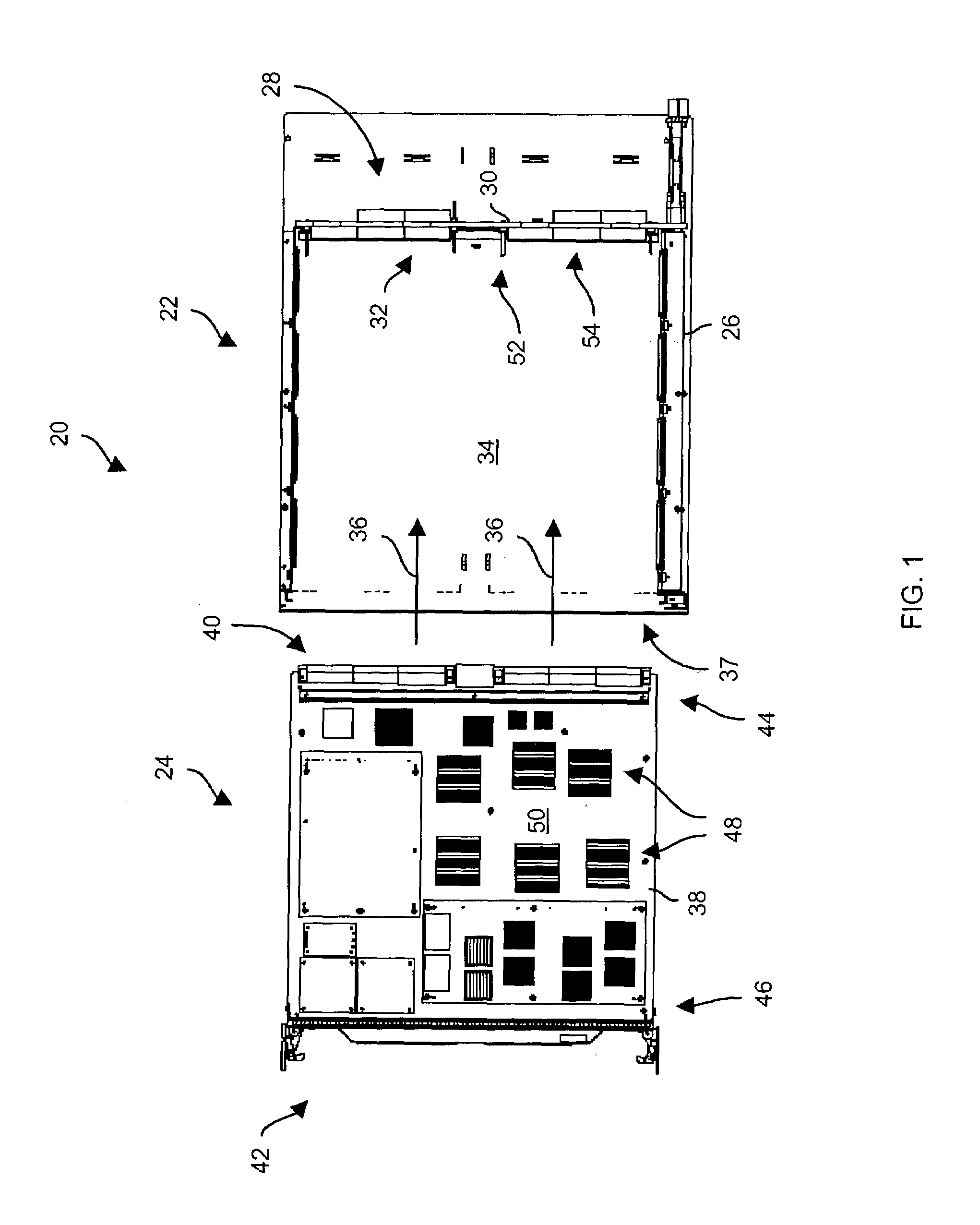Systems and methods for installing a circuit board assembly utilizing an insertion delay latch
- Summary
- Abstract
- Description
- Claims
- Application Information
AI Technical Summary
Benefits of technology
Problems solved by technology
Method used
Image
Examples
Embodiment Construction
[0026]The invention is directed to circuit board installation techniques which utilize an insertion delay latch. Use of the insertion delay latch enables a user to connect a circuit board to another structure (e.g., a backplane) in a staggered, but simple and deliberate manner. Accordingly, the insertion delay latch provides time for proper component alignment, and is well-suited for use in “hot swapping” situations that require or prefer that a first set of connector contacts to electrically connect (e.g., primary power signal pins for proper power sequencing) before a second set of connector contacts (e.g., non-primary power signal pins).
[0027]FIG. 1 shows a connection system 20 which is suitable for use by the invention. The connection system 20 includes an interconnection subsystem 22 and a set of circuit board assemblies 24. The interconnection subsystem 22 includes a card cage 26 and a backplane 28. The backplane 28 includes a rigid circuit board structure 30 (e.g., layers of ...
PUM
 Login to View More
Login to View More Abstract
Description
Claims
Application Information
 Login to View More
Login to View More - R&D
- Intellectual Property
- Life Sciences
- Materials
- Tech Scout
- Unparalleled Data Quality
- Higher Quality Content
- 60% Fewer Hallucinations
Browse by: Latest US Patents, China's latest patents, Technical Efficacy Thesaurus, Application Domain, Technology Topic, Popular Technical Reports.
© 2025 PatSnap. All rights reserved.Legal|Privacy policy|Modern Slavery Act Transparency Statement|Sitemap|About US| Contact US: help@patsnap.com



